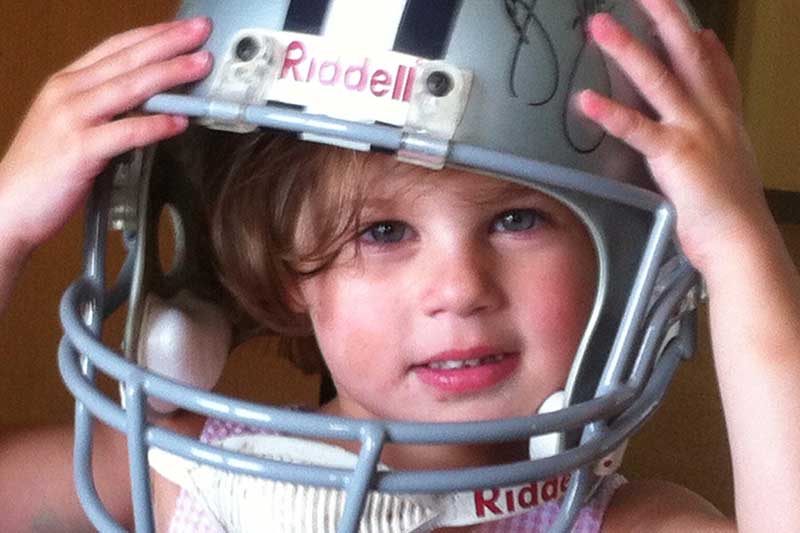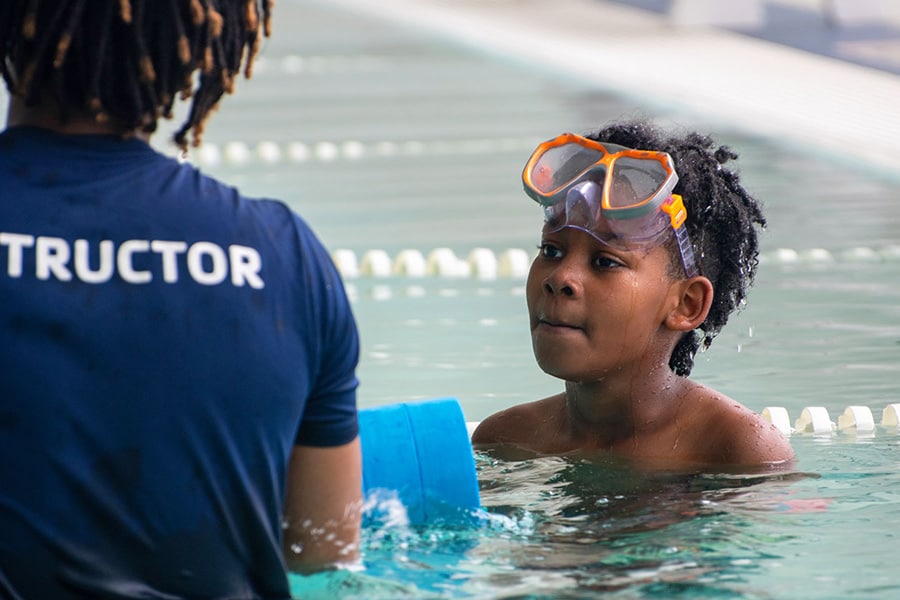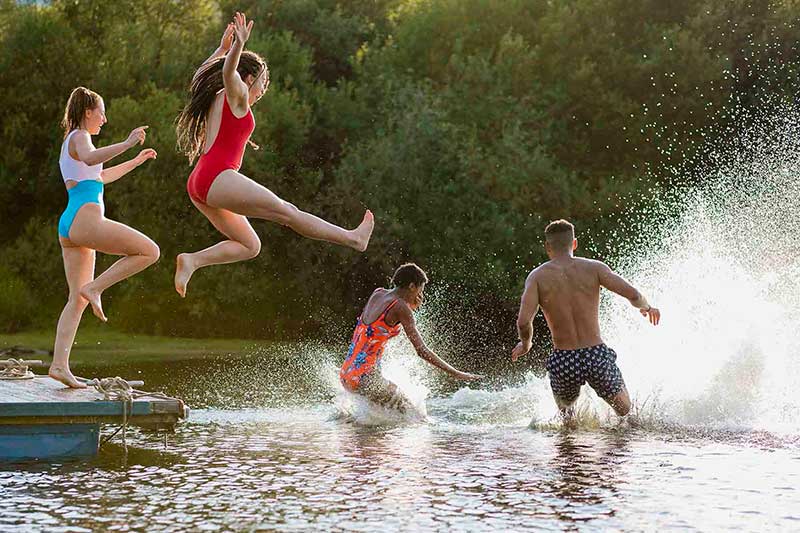Water Safety Rules for Infants and Toddlers
Practicing water safety for kids is crucial for caregivers because drowning is the leading cause of death in children ages 1 to 4. Babies are especially vulnerable—they can drown in as little as 1 inch of water.
But the good news is drowning is preventable. Whether it’s bath time or their first time at the beach, here are tips from our experts to keep your baby or toddler safe in and around water.
In this article:
-
Always be your child's lifeguard
Drowning remains a leading cause of death in kids from birth through the teen years. That’s why it’s important to always keep beginner swimmers within arm’s reach and stronger swimmers within eye’s reach around water. Swim lessons can help kids feel comfortable and confident in the water. But nothing is more effective at keeping your child safe than proper supervision.
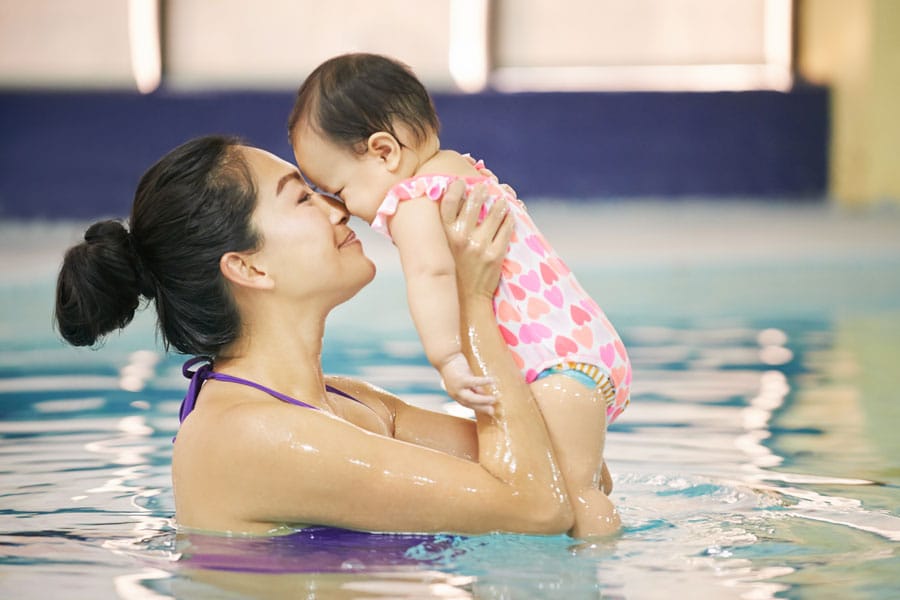
Our top water safety rules for babies and toddlers
Drowning is quick and silent. It can happen in just 30 seconds and in as little as 1 inch of water. That’s why, for babies in particular, our top water safety rule isn’t enrolling your child in swimming lessons. It’s practicing proper supervision.
Instead of thinking about being a “water watcher,” think about “touch supervision.” Here’s how:
- Keep beginner swimmers within arm’s reach. If your baby is in or around water, you should be able to reach out and touch them. At all times. This way, you’re close if they need your help.
- Never use flotation devices as a stand-in. You’re always your child’s best lifeguard. No device will ever provide the drowning prevention protection that you can. And these devices can give kids a false sense of confidence in the water. When kids are confident, they are more likely to take risks around water.
- Eliminate distractions around water. While you’re supervising your child in or around water, make sure you’re alert and aware. That means you’re not talking to friends or family, tending to another child, texting or talking on the phone, or drinking alcohol or under the influence of drugs.
Remember that swim lessons do not make children drown-proof. The best way to prevent drowning in babies and toddlers is to keep them close around water. You can also get trained in CPR so you’re prepared should an emergency ever occur.
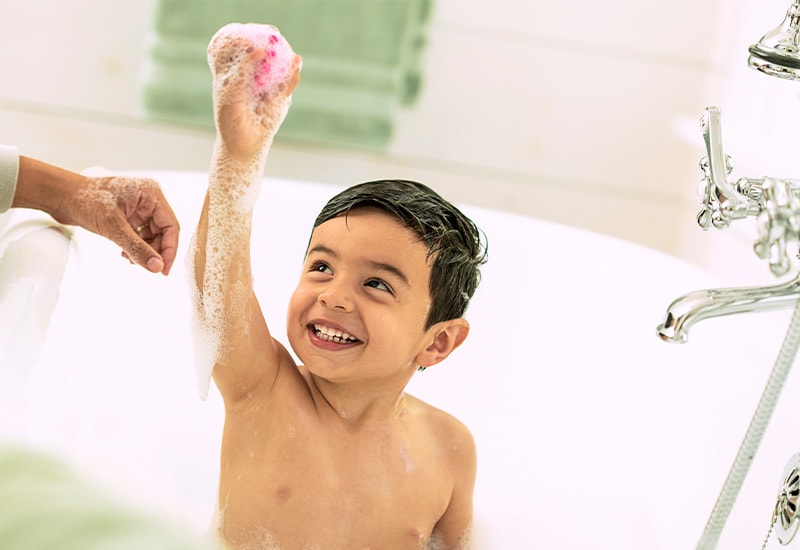
Bath safety tips for babies and toddlers
When you think of drowning prevention for babies and toddlers, you may think of horror stories of children drowning at pools, beaches or lakes. But, according to the Centers for Disease Control and Prevention, two-thirds of all drownings in infants happen in the bathtub.
Curious crawlers and toddlers are often tempted to explore new areas, like toilet bowls, sinks and tubs. That’s why it’s so important to baby-proof and close bathroom doors while they’re not in use.
At bath time, keep these safety tips in mind:
- Gather all supplies before you start the bath. Grab towels and shampoo and prepare the bath area before you turn the water on.
- Test the water temperature. Use your wrist or elbow to ensure the water is warm, not hot. To be extra careful, set your water heater thermostat to 120 degrees.
- Keep your baby or toddler within arm’s reach. Once the water is running, do not leave your child’s side. Bath seats and rings will not prevent drowning and may give a false sense of security.
- Install no-slip strips for the bottom of the tub to prevent falls.
- Remove toys after the bath so your child isn’t tempted to get back in the tub.
- Drain water immediately after each bath.
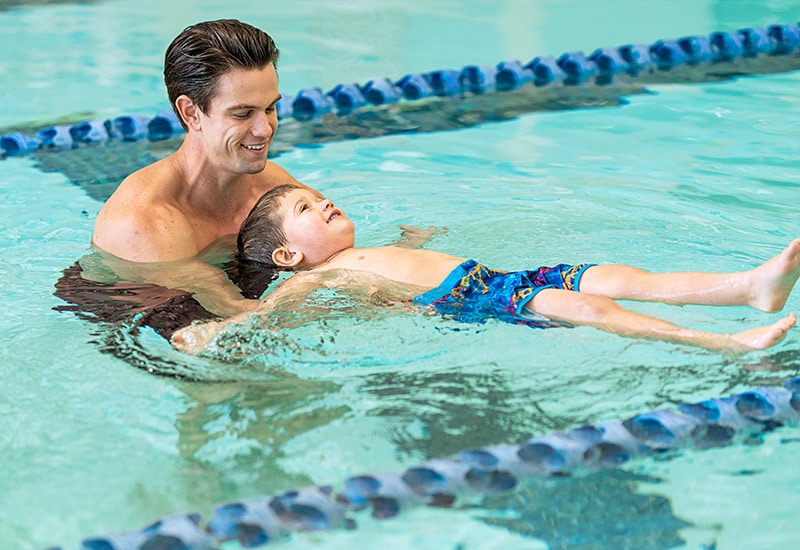
Swim lessons for babies and toddlers
First things first. Many caregivers wonder when babies can go in the pool. The American Academy of Pediatrics (AAP) doesn’t recommend a specific age minimum for taking your baby in swimming pools, but they do recommend waiting until they are 12 months old before starting swim lessons.
Before your baby is a year old, it may be a good idea to take water play classes as a bonding activity and to get them used to being in water. But there is currently no evidence that swimming lessons before the age of 1 help prevent drowning.
Once your child is a year old and you’re ready to start Googling, “baby swim lessons near me,” check out our tips for choosing swim lessons that are right for your family.
The best drowning prevention strategy for infants and toddlers is to always keep them within arm’s reach.
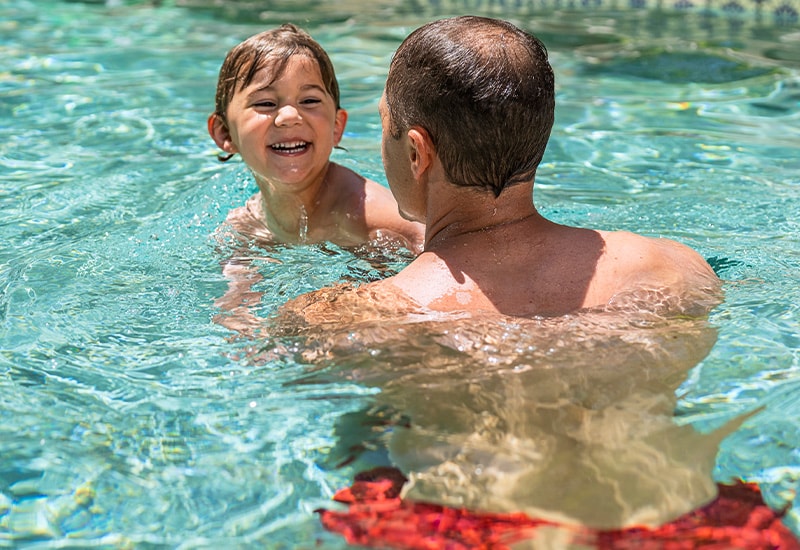
Pool safety for babies and toddlers
If your baby or toddler will be in or around swimming pools, touch supervision is still our top water safety rule.
In addition to always keeping your child within arm’s reach, here are ways you can practice water safety for kids at the pool.
- Make sure there is a 1-to-1 ratio of adults to small children. Each adult should only be responsible for one baby or toddler. Pro tip: Take a page out of airplane pilots’ books. If you are by the pool and need another adult to take over supervision of your child, tell them, “Your Noah.” Wait for them to respond, “My Noah,” to acknowledge that they are taking over.
- Empty baby pools and turn them upside down. After you’re done with a kiddie pool (or if there are other items that hold an inch of water or more), empty it and turn it upside down.
- Secure home pools with a fence. Close pools off on all sides with at least a 4-foot-high, self-latching fence. The fence should separate the pool from both your house and yard and should not have any openings.
- Make sure all home pool drain covers are intact. Consider asking your service provider to install anti-entrapment drain covers for extra protection.
Beach, river and lake safety for babies and toddlers
When you’re out enjoying the lake, beach, river or creek, the same general water safety rules apply. But you’ll also want to be mindful of more risks. Here’s how to enjoy a safe day by the water:
- Choose a location where a lifeguard is present if possible.
- Watch out for unsafe debris; rocks, broken glass, trash or seaweed could entangle an arm or leg.
- Look for posted signs or flags for swimming risks. Especially at the beach, there could be dangerous weather, currents or sea life. Avoid swimming if there are warnings about these hazards.
- Exit the water if there’s a storm. Take extreme caution if you hear thunder or see lightning.
- Teach young children to face the water. An unexpected wave can easily knock little ones over.
Boat safety for babies and toddlers
If you’re taking a baby or toddler out on the boat, or taking out a canoe or kayak, here’s how to practice water safety for kids:
- Make sure your baby can wear a U.S. Coast Guard-approved life jacket before taking them on a boat. The life jacket should be appropriate for your child’s size, and fit snugly and securely. The life jacket should not ride up above their ears. If it does, it’s too big. When they’re on the boat, fasten all straps and zippers.
- Ensure all children wear a life jacket while on board. The coast guard requires a life jacket to be worn in a moving boat until age 13, even if your child is a strong swimmer.
- Make sure your child’s jacket fits properly—if the jacket hits their ears or chin, it’s too big.
- Hold babies in your lap on the boat, while also wearing your own life jacket.
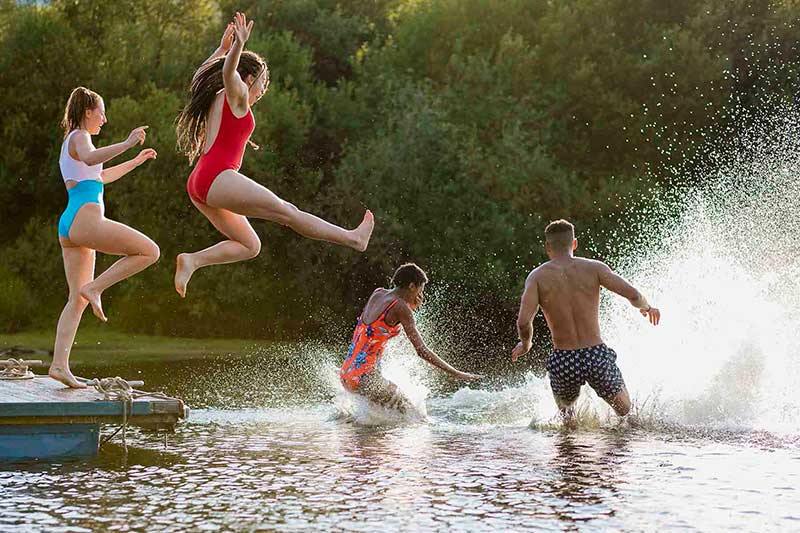
Water safety for kids and teens
As kids get older, and continue developing independence, their behavior changes. So the water safety rules for kids and teens are a bit different than for babies and toddlers. For instance, drowning risks for teens rise because they’re more likely to try risk-taking behaviors, such as boating at night, jumping into water head-first or using substances that impair their coordination and judgment.
If you have a grade schooler, tween or teen, check out our water safety tips for kids and teens.
If your child has an injury or is showing signs of illness, call your doctor or visit an urgent care center. If your child has a life-threatening injury or illness, is having trouble breathing or is unconscious, call 911 and/or visit an emergency department immediately.
-
How to Keep Your Kids Safe Around Water
Learn more about our top water safety tip: arm’s reach, eye’s reach. Always keep children younger than 6 within arm’s reach around water. And keep older, more confident swimmers within eye’s reach. -
Child's Tragic Drowning: Family Urges Water Safety
In 2014, Amy and Jeff lost their daughter to a fatal drowning. Now they’re sharing Elliott’s story for the first time, hoping to prevent other families from feeling their tragic loss. -
Drowning is Silent
It only takes 30 seconds and an inch of water for a child to drown. Keep beginner swimmers within arm’s reach.
